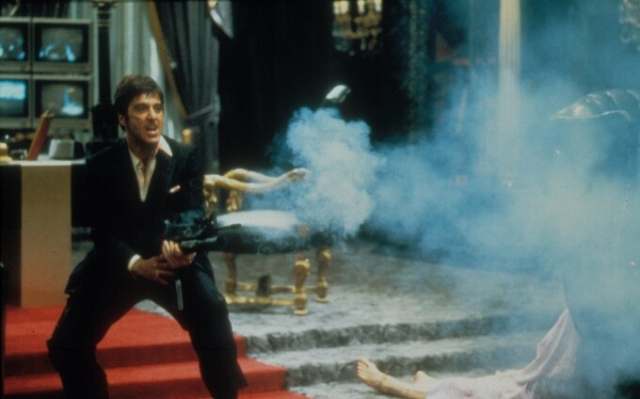 Little Friend: The ultra-violence in the film caused great controversy. Photo: Moviestore Collection/Rex Feat
Little Friend: The ultra-violence in the film caused great controversy. Photo: Moviestore Collection/Rex Feat
Scarface was the most controversial film of 1983 even before it came out. Twenty-five minutes into Brian De Palma's seething gangster epic, future Cuban crime boss Tony Montana (Al Pacino) watches in handcuffs as his colleague Angel (Pepe Serna) is dismembered with a chainsaw in a bathtub after a spectacular drug deal gone wrong. sour.
This crazy scene, happening so early, shocked writers Kurt Vonnegut and John Irving so much that they left. Halfway through the screening, Martin Scorsese turned to Pacino's partner Steven Bauer and warned him that the reaction in Hollywood would be apoplectic.
He wasn't wrong. As we watched Montana's rapid rise from street rat to kingpin, the unbridled bloodshed, unprecedented cocaine snorting and wall-to-wall swearing was enough to outrage America's ratings board, the Motion Picture Association of America (MPAA). They gave De Palma's film a scary X rating for «excessive and cumulative violence and language.»
If it had been classified in the same category as hardcore pornography, X would have lost a fortune for Universal, which had seen its budget rise alarmingly from an initial $10-$15 million to something north of $30 million. De Palma, whose slow methods caused this bleeding, refused and appealed the rating, staking his entire reputation on the film's success.
The remake of Howard Hawks's classic 1932 pre-Code film, starring Paul Muni as a ruthless Italian hoodlum, was not De Palma's idea — or even that of screenwriter Oliver Stone, who became a hot commodity after his Oscar-winning work in Midnight Express (1978). ). . Pacino and his producing partner Martin Bregman (Serpico, Dog Day Afternoon) separately liked to claim that they saw a revival of Hawks' film and enthusiastically proposed making their own version, approaching Stone and their then-director Sidney Lumet. .

Stone wasn't thrilled at first: «I didn't want to do a movie about the Italian mafia,» he said. Lumet won him over with the idea of filming a film in Miami about the Marielitos, Cuban immigrants exiled to Florida by Fidel Castro in 1980. Jimmy Carter complained that his open-arms policy toward these refugees meant that Castro was sending him the scum of his prisoners, almost as a middle finger salute.
Indeed, at the beginning of the film it is said that 25,000 of the 135,000 arriving boats had criminal records — although revised estimates indicate that only about 2,700 of them were habitual criminals. Among them, in the images of Miami «Scarface», there is only one Tony Montana.
What Stone had in store—a wild look at the greedy, self-centered underbelly of the American dream—was not to Lumet's taste. He quickly moved on to the NYPD corruption drama Prince of the City (1981). De Palma, who was struggling to get the film off the ground, stepped in as the director-for-hire for two main reasons: he wanted to work with Pacino, and as plans progressed, he desperately needed a project that he could would implement. came after the disappointing failure of his brilliant, dark thriller Blow Out (1981), starring John Travolta as a sonic genius who accidentally records a murder.
The production was plagued by so many problems that De Palma may have regretted the day he signed the contract. The PR battle had to be fought from the start in Miami because representatives were seriously concerned that the film would fuel anti-Cuban sentiment by portraying them all as violent scum.
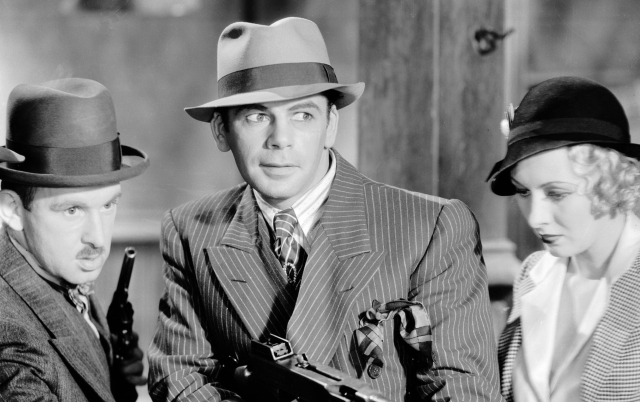 Paul Muni in the original 1932 Scarface film. Photo: John Kobal Foundation
Paul Muni in the original 1932 Scarface film. Photo: John Kobal Foundation
A far-right city commissioner named Demetrio Perez wanted to ban filming there unless Montana was rewritten as a communist agent sent by Castro to infiltrate the US. As intriguing as this idea is, it would be hard to imagine a character more opposed in his attitude to the cold-blooded psychopath the filmmakers had in mind — a grotesque example of rugged individualism who wants to gut all communists and believes the only downside capitalism imposes is any nor was his ill-gotten wealth taxed.
Amid all the hype, most of the filming had to be moved to California, with the exception of ten days of location filming under the watchful eye of south Florida. “The film was a nightmare to make,” Stone recalled, “it took three months and I was on set until the very end. They kept me there. It was like, 'Who do you have to fuck to get off this ship?'
Pacino was taken to the hospital after burning his hand with the burning muzzle of an M14 machine gun. A few months before the release, De Palma gave an interview to Women's Wear Daily in which he blamed the film for the collapse of his marriage to Nancy Allen, whom he had cast in Carrie Dressed to Kill and Explode but turned down. do it. In the role of Elvira, drug addict Michelle Pfeiffer would have played with porcelain perfection.
 Scarface made a star of the then unknown Michelle Pfeiffer. Photo: Cinematic/Alamy Stock Photo
Scarface made a star of the then unknown Michelle Pfeiffer. Photo: Cinematic/Alamy Stock Photo
The director's only breakthrough was winning an appeal against the MPAA's X rating, which was downgraded to R — and he even cleverly restored all the edits he'd made to appease the board of directors without anyone noticing. Alas, there were also critics who could not help but be impressed. By and large, Scarface was slaughtered — he was called empty, excessive, gloating and gratuitous.
Even De Palma's usual ally, Pauline Kael, had a lot of problems with it. Highlighting the «reckless brilliance» of the chainsaw scene as a highlight, she criticized the film's dramatic storyline — «there's no middle ground» — and called it «manic but exhausted» as Pacino's efforts were wasted on a character so consistently pig-like. that the public did not enjoy it. She compared him — and rightly so — to De Niro's Jake La Motta in Raging Bull (1980), another film that Kael disliked for reasons that now seem a little superficial. It's as if she's asking these disgusting men with their «macho primitivism» to somehow satisfy the audience's desire to be conquered. Fascinated.
In hindsight, all the troubles Kael describes in Scarface are right there, but it comes down to unbridled vision rather than a litany of flaws. Quickly tracking Tony to filthy riches while skipping his steps is the swaggeriest way to comment on his ugly greed. This sets De Palma's film apart from The Godfather (or the likes of Casino) and makes it a prescient cocaine-loving satire of Reaganite consumption. “Nothing beats excess,” Pfeiffer quips.
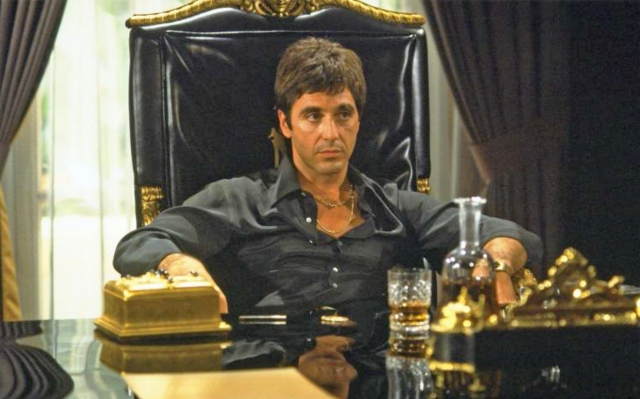 Al Pacino as crime boss Tony Montana Photo: Pictorial Press Ltd/Alamy Stock Photo
Al Pacino as crime boss Tony Montana Photo: Pictorial Press Ltd/Alamy Stock Photo
With Giorgio Moroder's icy score and mirror-filled nightclub scenes, Scarface showcases an archetypal early 1980s aesthetic while still managing to feel like the last word in self-indulgent glamor of a decade that had barely begun. When Tony berates all the rich, shocked patrons of a posh restaurant, calling them hypocrites even worse than himself, the scene would hardly benefit from more social realism — it's a one-sided slap in the face, a screed. Tony, of course, doesn't listen to anyone: he just screams, waiting for the attention of the whole world.
It took a while to get there. Scarface barely broke even in 1983, plagued by reviews and behind-the-scenes infighting, earning a mediocre $65 million worldwide. But it soon became a runaway hit on VHS, selling more than 100,000 copies (at a staggering $79.95 per cassette in the medium's early days). In 2003, the 20th Anniversary DVD re-release became the best-selling disc of all time, beating even E.T. Saddam Hussein was such a fan that he named his family trust fund Montana Management after Tony.
Over time, it became a huge touchstone in hip-hop culture, referenced and sampled by everyone from Public Enemy to Jay-Z. Rapper Sean Combs claims to have seen it 63 times; he has had an incalculable influence on rap videos since its inception.
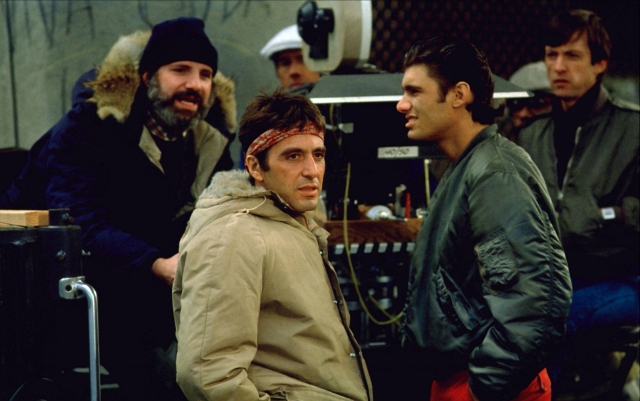 Brian De Palma, Al Pacino and Steven Bauer on set Photo: Maximum Film/Alamy Stock Photo
Brian De Palma, Al Pacino and Steven Bauer on set Photo: Maximum Film/Alamy Stock Photo
Electronic artist and composer EMMA, whose primary instruments are synths, has had the film on her “creative mood board” since she first heard “Tony’s Theme.” “The mood is alarmingly complex,” she explains. “Every sound has a purpose and space is used wisely. It helps me establish the gold standard of the emotion you want to bring out of a story through your music, and what can be achieved by putting minds together.»
A Blimp Passing By Tony's Mansion Saying «The World Is Yours» — nodding toward the billboard under which Mooney dies in Hawks's original — gives the film a reckless charm that goes beyond glamor and firepower. EMMA believes this is the reason why so many artists have taken inspiration from Scarface: «The desire for something simply unfathomable is the perfect creative canvas.»
Homage to Hawkes and his screenwriter Ben Hecht – the final shot of Tony floating face down in a bloodbath, surrounded by dead thugs is mischievously funny. But just as important is now the staggering immorality of what Stone, De Palma and Pacino themselves created.


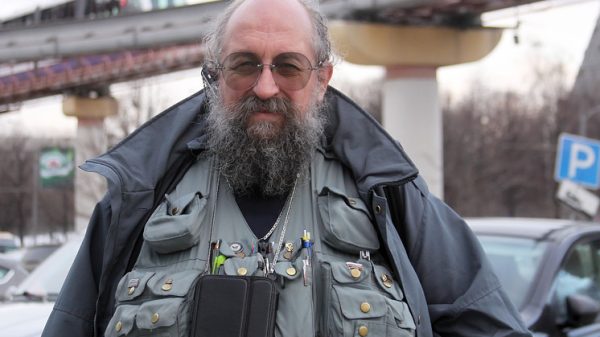











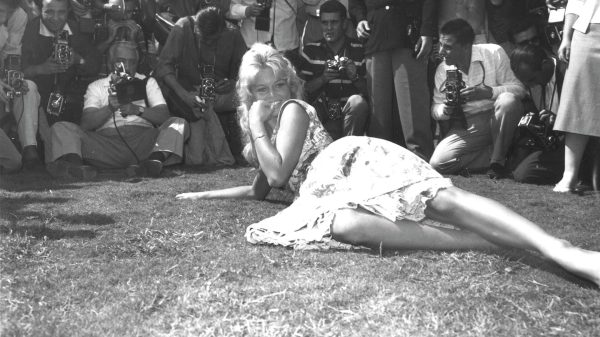

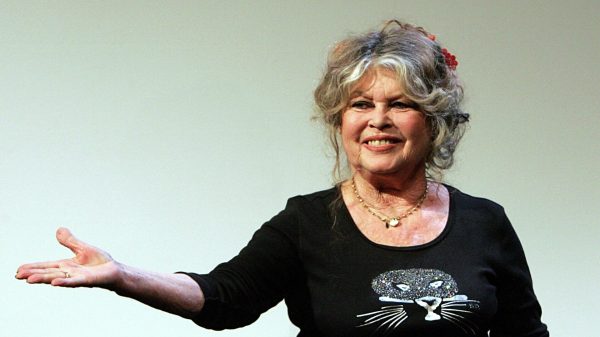





































Свежие комментарии